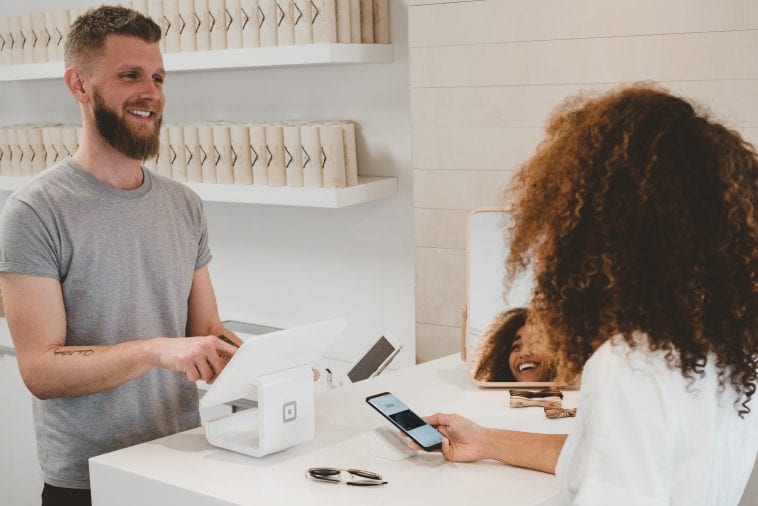Customer retention is vital to customer satisfaction. If you can retain your customers and keep them loyal, you can expect a highly satisfied consumer base for your product in the long run.
Many companies have incorporated upskilling initiatives into their training modules to convert their salespeople into quality customer service representatives.
Customer satisfaction surveys can be useful in gauging the customer’s overall experience with a company. By obtaining customer feedback, you’re able to not only identify a problem but also come up with an alternate solution to improve the quality of your offerings.
When it comes to your brand, you’ve got to be customer-centric. You need to understand your clients better and appreciate their needs. If you don’t keep customer satisfaction in mind, your business could lose customers and spend your time patching up relationships.
This is where customer satisfaction feedback or surveys come in.
To get customer feedback surveys right, you must understand the “language” your customers speak. However, you may still want to make sure that you are implementing the right metrics – it can be the difference between bringing in customers or losing them.
In this post, we will look at some key success metrics and apt questions that we need to include while creating a custom customer satisfaction e-mail.
At the outset, let us consider the success metrics that you need to measure while keeping track of client experiences for your brand.
Customer Satisfaction Score (CSAT):
The CSAT is an important metric that measures whether a company’s products or services continue to find favor with its users. In other words, this is commonly used to track how satisfied customers are with the brand and the products or services it has to offer.
You may remember answering a question that looks like “How would you rate your overall satisfaction with your order?” after a purchase.
That is an example of a customer satisfaction score metric.
Users may choose any of the values on a 1 to 5 scale:
1. Very unsatisfied.
2. Unsatisfied.
3. Neutral.
4. Satisfied.
5. Very satisfied.
The CSAT is calculated as the percentage of satisfied customers who respond positively to your brand over the total number of survey responses collected.
Net Promoter Score:
A Net Promoter Score(NPS) survey evaluates customers on how likely they are to recommend your brand or product to a friend or colleague on a scale of 0-10.
The NPS is usually considered an effective benchmark of customer experience. The term was coined in 2003 by the consulting firm Bain and Company. Established brands use the NPS to track how positively(or negatively) the consumer perceives the brand.
Respondents are categorized as Promoters, Passives, and Detractors based on their recorded responses and ratings.
Promoters: Usually assign ratings with a score of 9 or 10 and are perceived to be loyal brand advocates.
Passives: Usually assign ratings with a score of 7 or 8. They may find your products or services satisfactory, but still exhibited less enthusiasm when it comes to brand loyalty.
Detractors: Usually assign ratings with a score of 0 to 6. Poor ratings reflect dissatisfied consumers.
Customer Effort Score (CES)
The Customer Effort Score measures the ease of interaction of customers with your business. It may relate to product use, or features or after-sales services such as getting an issue resolved through technical or customer support.
Usually, questions are asked on a numbered scale. An example of such a question may be – “On a scale of 1 to 5, how difficult was to get your issue resolved?”
1 = Extremely difficult
2 = Very difficult
3 = Neither
4 = Very easy
5= Extremely easy
The customer effort score is calculated by dividing the sum of all individual scores by the number of users who choose to respond to the survey. A company may send a CES survey after the closure of queries or support tickets to measure the performance of its customer service representatives.
Customer satisfaction survey questions measure the levels of customer satisfaction with the products and services of a company.
There are four types of customer satisfaction survey questions: Close-ended or point questions, multiple-choice questions, scaled questions, and open-ended questions.
Close-ended questions may include:
- How satisfied were you with the information provided?
- Where do you live? (relates to demographic information)
- What features would you like included as part of the product in the future?
- Were you greeted in a friendly manner by our hotel’s staff?
- Did our staff answer your questions?
- Did you find our staff helpful and courteous?
- Were you served promptly?
- Is our product/service no longer useful to you?
- Did the updated price of our product/service cause you to leave?
- Have you decided to test out another brand?
Multiple-choice questions may include:
- How old are you? (related to basic demographic information)
- What is your employment status?
- What is your marital status?
- What is your income level?
- Which item is your favorite?
- What would make this service better?
- When you first got in contact with us, how did you like our telephone/company representative?
- When you first started using our service, how did you like it?
- Are there any features or activities that you would like us to include in the future?
Scaled Questions may include a variety of questions, such as:
- On a scale of 1-5, how would you rate your overall experience with your order?
- On a scale of 1-5, how satisfied are you with your purchase?
- O a scale of 1-10, how likely are you to visit us again?
An open-ended question invites free responses and may include questions like:
- Why did you choose our brand?
- What do you like most about our product/service?
- What do you like least about our product/service?
- How could we improve our product/service?
- What are some campaign analytics software that you have used in the past?
- What other options/brands/applications have you considered in the past?
- What challenge or problem does our product or service address for you?
The Key To Nailing Your Survey Response Levels
So what do you want your survey participants to do? Well, you want them to actively answer your questions. If they’re not providing correct feedback in your survey, you’re wasting everyone’s time.
The idea here is to direct their feedback towards a clear, actionable problem, and allow them to take control of the situation to find a solution.
So how do you get this feedback in your surveys?
The solution is to create your questions in such a way that answers the audience’s queries or pain points or challenges. You need to combine the responses so that the results will give you a well-rounded view of your customers.
Obviously, the more thorough your questions are, the more valuable the data you’re getting. But here are survey best practices to keep in mind, and what to look out for:
Yes/no – No.
Quickly opening up your survey and asking yes/no questions is an obvious choice. Of course, you want to get the most people in your survey so that you can get their response data. But, you also don’t want to be calling out an ambiguous question that results in a bunch of confusing answers from your survey respondents.
On the other hand, if you’re looking for direct input on the data you’re looking for, this might be the best way to go.
Get a decent number of responses.
The most basic survey question you can ask will also be the most common. You’ll want to make sure that you’re getting a decent number of responses. However, it’s probably not a good idea to be asking too many questions that have a lot of potential to offend your respondents.
Questions that do not elicit responses aren’t going to give you enough value. Instead, aim for a line that gets a decent amount of responders(20-30 percent).
Don’t ask pointless questions.
Questions that have a high risk of leaving your respondents scratching their heads can sometimes be a good choice, but they may not provide an accurate overview of your respondent’s preferences.
Some questions you should avoid are:
Q: Why haven’t you installed our app?
This kind of a question seems very vague. Your potential customer doesn’t know why they haven’t installed your app, so they’ll be in no position to fill that out. Instead, a better question would be:
“Have you tried the app?”. This is a more direct query that the respondent can answer.
Q: Would you like to try the app?
Here, you’re asking them to fill in their details, such as how much they use their smartphone, so they’re able to get back to you with their feedback. This is a much more direct way of getting feedback because it means that they’re actively taking the next step towards downloading your app. Brands are starting to look at customer satisfaction to develop their products. Think of customer satisfaction as a metric that reveals how your business measures up against its competitors. Designing your customer satisfaction surveys appropriately could be crucial to the growth of your brand.



